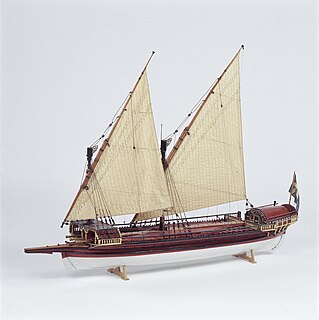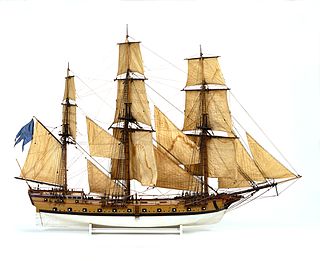 W
WThe Swedish Royal Navy is the naval branch of the Swedish Armed Forces. It is composed of surface and submarine naval units – the Royal Fleet – as well as marine units, the Amphibious Corps (Amfibiekåren).
 W
WThe archipelago fleet, officially the Fleet of the army, was a branch of the armed forces of Sweden which existed between 1756 and 1823. Its purpose was to protect the coasts of Sweden, which was surrounded by a natural barrier of archipelagoes. Throughout its existence, it was a largely independent arm of the army, separate from the navy, with the exception of a few years in the late 1760s. In a number of respects, it was a precursor of the Swedish Coastal Artillery and its coastal fleet.
 W
WChief of Navy is the most senior appointment in the Swedish Navy. The position Chief of Navy was introduced in 1936 and the current form in 2014.
 W
WThe Hårsfjärden, or Horsfjärden, is a fjard off the Baltic Sea near Stockholm, Sweden. About 20 kilometres (12 mi) long, it has surface area of 61.5 square kilometres (23.7 sq mi). It is the location of three Swedish naval bases: Märsgarn, Muskö, and Berga.
 W
WA hemmema was a type of warship built for the Swedish archipelago fleet and the Russian Baltic Fleet in the late 18th and early 19th centuries. The hemmema was initially developed for use against the Imperial Russian Navy in the Archipelago Sea and along the coasts of Svealand and Finland. It was designed by the prolific and innovative Swedish naval architect Fredrik Henrik af Chapman (1721–1808) in collaboration with Augustin Ehrensvärd (1710–1772), an artillery officer and later commander of the Swedish archipelago fleet. The hemmema was a specialized vessel for use in the shallow waters and narrow passages that surround the thousands of islands and islets extending from the Swedish capital of Stockholm into the Gulf of Finland.
 W
WA pojama or pojema was a type of warship built for the Swedish archipelago fleet in the late 18th and early 19th centuries. It was developed for warfare in the Archipelago Sea and along the coasts of Svealand and Finland against the Russian navy. The pojama was designed by the prolific naval architect Fredrik Henrik af Chapman for use in an area of mostly shallow waters and groups of islands and islets that extend from Stockholm all the way to the Gulf of Finland.
 W
WRoyal Swedish Naval Materiel Administration was the central board of the Swedish Navy in technical and economic terms. It was active between the years 1878 and 1968 when it was disbanded and amalgamated into the Defence Materiel Administration.
 W
WThe Royal Swedish Navy Cadet Band (RSwNCB) is a symphonic wind band with military traditions, and was created in 2002 as a non profit organization in cooperation with the Swedish Armed Forces Music Centre and the Royal Swedish Navy Band. The RSwNCB is the only young band in Sweden, alongside the former conscript bands, which has been approved for and performed at the ceremony of the Changing of the Royal Guards at the Stockholm Palace in Stockholm.
 W
WSwedish Auxiliary Naval Corps is a Swedish auxiliary defence organization that cooperate with the Swedish Armed Forces.
 W
WThe Swedish Coastal Artillery has its origin in the Archipelago Artillery that was raised in 1866. The Coastal Artillery was formed from the Archipelago Artillery, the Marine Regiment and parts of the Artillery in 1902. Kustartilleriet, abbreviated KA, was an independent branch within the Swedish Navy until July 1, 2000, when the Swedish Coastal Artillery was disbanded and reorganised as the Swedish Amphibious Corps. The changed name and new structure were to reflect the new tasks that the old Coastal Artillery had moved to after the end of the Cold War and the demise of the Warsaw Pact.
 W
WA turuma was a type of warship built for the Swedish archipelago fleet in the late 18th century. It was specifically developed for warfare in the Archipelago Sea and along the coasts of Svealand and Finland. The turuma was designed by the prolific naval architect Fredrik Henrik af Chapman for use in an area of mostly shallow waters and groups of islands and islets that extend from Stockholm all the way to the Gulf of Finland.
 W
WAn udema, also udenma, was a type of warship built for the Swedish archipelago fleet in the late 18th and early 19th centuries. It was developed for warfare in the Archipelago Sea in the Baltic and along the coasts of Svealand and Finland against the Russian navy. The udema was designed by the prolific naval architect Fredrik Henrik af Chapman for use in an area of mostly shallow waters and groups of islands and islets that extend from Stockholm all the way to the Gulf of Finland.